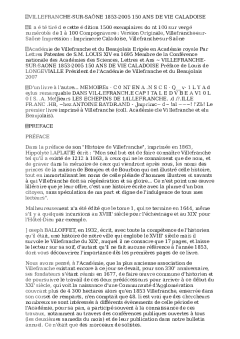Vydyne processing guide V Y D Y N E M O L D I N G G U I D E CContents What is Nylon Comparing Nylon to Other Engineering Thermoplastics Amorphous Polymers Semi-crystalline Polymers Using the Polymers in Parts Fabrication Typical Characteristics of Nylon P
V Y D Y N E M O L D I N G G U I D E CContents What is Nylon Comparing Nylon to Other Engineering Thermoplastics Amorphous Polymers Semi-crystalline Polymers Using the Polymers in Parts Fabrication Typical Characteristics of Nylon Polymers Tool Design Tool Design for VYDYNE Nylon Resins Tool Design Considerations Multi- cavity Tool Layout and Tool Balancing Runner Design Sprue Bushing Considerations Gate Design Gate Location Vent Location Cooling and Mold Steels Draft Angles Ejector Systems for Molding VYDYNE Nylon Resins Mold Cooling Injection-molding Process Drying of Plastics Materials Hopper Dryer Design for Drying Hygroscopic Materials Dew Point Temperature and its Importance in Drying of Hygroscopic Materials Troubleshooting Drying of Plastics How to Dry Nylon Processing Conditions for VYDYNE Nylon Resins General Purpose VYDYNE Resins Heat-stabilized VYDYNE Resins Nucleated VYDYNE Resins Weather-resistant VYDYNE Resins Ignition-resistant VYDYNE Resins Mineral Glass- ?lled VYDYNE Resins Glass- ?lled VYDYNE Resins Hydrolysis-resistant Glass- ?lled VYDYNE Resins Nylon Copolymer Glass-Filled VYDYNE Resins Industrial-grade VYDYNE Nylon Resins Screw and Molding Equipment Guidelines Screw and Check Ring Design Injection-molding Machine Type and Size Mold Shrinkage and Dimensional Stability Mold Shrinkage Prediction Post-mold Shrinkage and Estimating Total Shrinkage Post-mold Shrinkage Estimating Total Shrinkage Packing and Part Density Part Weight Flow Tabs Cavity Pressure Control Coe ?cient of Linear Thermal Expansion CLTE Troubleshooting Guide for Injection Molding Nylon Coloring VYDYNE Nylon Resins Safety and Handling Considerations CWhat is Nylon A monomer is the basic building block of a polymer The monomer is reacted under the e ?ect of heat and or pressure and a catalyst monomer and links with more of the same monomer or with di ?erent monomers to form one long chain of monomers called a polymer from the Greek ??poly ? meaning many and ??mer ? meaning units Figure ?? Basic Amide Group Found in Nylon OH CN Polyamides otherwise known as nylon can be produced in a number of ways depending on the combination of monomers used to create the long chain The amide group shown in Figure is the basic building block for most nylons or polyamides Polyamides can be produced by combining and polymerizing two monomers one or two amine or diamine groups with one or two carboxylic acids or diacid groups or by polymerizing a single monomer containing both amine and acid The polymer structure will determine the physical properties of a particular polyamide Figure illustrates how nylon and are produced The basic monomer used to produce nylon is caprolactam a monomer with a ring- shaped structure containing an amide group These polymerize by ring opening to form nylons which are designated based on the number of carbon atoms in the lactam monomer For nylon ?-caprolac- tam C is the main feedstock used For nylon laurolactam C is used Nylons designated with dual numbers such as nylon or nylon are formed by combining diamines and diacids to form the polyamide polymer These polymers are formed using condensation polymerization In the Figure ?? Manufacture of Nylon and CWhat is Nylon
Documents similaires










-
38
-
0
-
0
Licence et utilisation
Gratuit pour un usage personnel Aucune attribution requise- Détails
- Publié le Oct 19, 2021
- Catégorie Geography / Geogra...
- Langue French
- Taille du fichier 290kB


